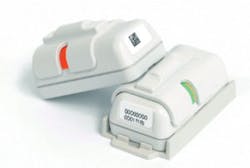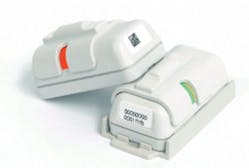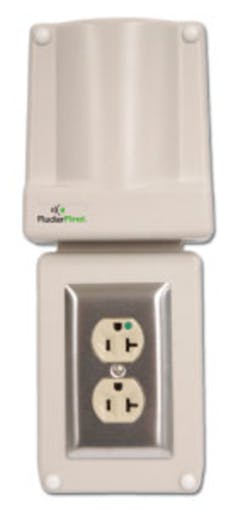A real-time location system finds improved staff satisfaction, reduced costs and better patient care.
Wayne Memorial Hospital (WMH) is the primary healthcare provider in Goldsboro, N.C., and the surrounding areas of Wayne County. Since 1896, WMH has grown from a small, grass-roots organization to a full-service hospital and regional referral center offering a full spectrum of specialties. The hospital is licensed for 316 beds and has more than 124 physicians on the medical staff.
A real-time location system finds improved staff satisfaction, reduced costs and better patient care.
The Problem
Every healthcare facility, including WMH, depends on a variety of mobile medical equipment in order to deliver quality patient care. Wheelchairs, IV pumps, pulse oximeters, sequential compression devices (SCD) and computer carts are several examples of equipment that often becomes lost, stolen or misplaced in a hospital. Lost equipment not only drives up operational expenses, it also creates organizational inefficiencies such as wasted time staff spends searching for equipment instead of providing patient care. This adds undue stress to the work environment, potentially lowering morale or possibly contributing to medical errors, both of which lower the quality of patient care and are costly to a hospital.
The magnitude of this problem and the potential dangers struck home for me on a personal level when my son, Thomas, was a WMH patient. I noticed an expired inspection sticker on his IV pump and brought this to the attention of the clinical engineering department. Mark Renfroe, manager of Clinical Engineering, looked at me and said, “You found it! We’ve been looking for that pump for months!” This experience, combined with similar stories and reports of staff frustration throughout the hospital, led us to recognize the need to seriously address this issue.
Solution
Through fortunate timing, North Carolina-based RadarFind Corporation sought hospital input for a new type of real-time location system (RTLS) it was designing specifically for hospitals and asked WMH to serve as a beta site. From the research gathered from numerous hospital interviews (including WHM), the company developed a tracking system that not only determines location, but also equipment status — a critical function that is surprisingly absent in other tracking systems. We also suggested a minimally disruptive installation; closing patient rooms or other clinical areas while installing hardware can result in lost revenue normally generated from those areas, adding significant “hidden costs” of implementing new systems.
Confident of the successes we have had in pioneering several healthcare technologies through the years, we agreed to work with RadarFind to implement the RTLS and measure its impact on some of our processes. The system uses asset tags that are affixed to equipment and communicate bi-directionally with readers (sensors) plugged into standard electrical outlets throughout the hospital. The readers include new hospital-grade outlets which remain available for use by other equipment. The readers send location and status information to data collector units on each floor. Data transmits over Ethernet from the collector units to a dedicated central server; Web-based maps and lists display location information via the WMH Intranet.
Each piece of equipment is tagged and assigned a unique ID number, and some tags enable hospital staff to trigger a switch that indicates equipment is in use with a patient, needs cleaning, or is available and ready. Our IT staff appreciates the fact that the system, which operates in the 900 MHz ISM band, does not interfere with or tax the hospital’s existing WiFi network.
Implementation and Training
The vendor worked with nursing directors, clinical engineering staff, IT and several additional WMH departments in 2006 to conduct a needs assessment, develop the user interface and establish desired performance objectives. The implementation team assigned tags to equipment most often missing: infusion pumps, SCDs, blood pressure and vital signs monitors, pulse oximeters and wheelchairs.
For more information
on RadarFind solutions
The company also worked with staff to determine reader placement and discovered that some areas of the hospital required more readers than others to achieve greater density and finer granularity of data, (i.e., where equipment is used most often). The clinical engineering and environmental services staff tagged the equipment, using a bar-code scanner to register tags in the system, while facility staff plugged readers into assigned outlets. The system went live in November 2006 with the vendor conducting user training initially, then subsequently by the hospital’s staff development team.
Results
Our staff has embraced the system, with usage-compliance rates on some floors exceeding 95 percent, indicating immediate value for the new system. Nursing and clinical engineering staff report increased efficiency due to quick location of equipment available for clinical use or preventive maintenance. According to LuJene Merritt, 6th floor nursing director, “The RTLS improves the quality of the work environment by reducing the stress involved in locating equipment.”
Built-in software gathers utilization data from the switch-enabled status tags showing how often equipment is in use, available, or being cleaned and disinfected, and converts it into various reports. We discovered from these reports that infusion pumps were in use only 45 percent of the time during the first quarter of 2007 (a historically high patient census period). With this knowledge, we were able to reduce a planned infusion pump purchase by 53 units. This decrease in capital expenditure alone saved the hospital $303,000 in equipment and a year’s operating expenses — an amount that exceeds the system’s cost for a similar-sized hospital. We also utilized data gathered by the system to reduce our purchase of bladder scanners, resulting in an additional $24,000 savings.
Documented Process Improvements
Prior to implementing the RTLS, medical and surgical units received a spreadsheet from the clinical engineering department every month listing equipment by serial number that was supposed to be on a particular unit. Nurses then had to locate that equipment with an initial floor search and subsequent e-mails and phone calls to other floors if that was unsuccessful. This frustrating process could take as many as five days to complete, and approximately three to four hours of additional staff time.
Inventory is now conducted twice monthly and completed in a matter of minutes using the RTLS and automated location system. The morale of our staff is notably higher without the frustration and wasted time of locating equipment; up to eight hours of valuable nursing staff time is saved each month, and our inventory accuracy is assured. According to Shirley Harkey, WMH chief nursing officer, “If our nurses can find their pumps and other medical devices, we won’t need to purchase excess equipment. They are spending more time on patient care rather than searching for equipment.”
Our Central Sterile staff also is benefitting from the status feature of the equipment tags. Georgie Teachey, Central Sterile supervisor, says, “With just a few taps of a finger on a touchscreen, we know where the dirty equipment is and dispatch staff accordingly. The system clearly accelerates the equipment cleaning process.”
Reduced Labor, Improved Patient Transport
More than 12 hours of staff time (one Saturday each month) was allocated to search the entire hospital to confirm wheelchair inventory and identify any necessary repairs to ensure patient safety prior to the system’s implementation. Since wheelchair maintenance staff was not available on Saturdays, transport staff had to wait until the following week for repairs.
Inventory is now checked in a matter of minutes every week and wheelchairs are located immediately with the RadarFind system. In addition, we have experienced a 44 percent cost savings in labor reductions, along with the assurance that all wheelchairs are safe for patient transportation. More importantly, by using the new RTLS system, the total wheelchair transport time (from locating and retrieving the wheelchair to transporting the patient) was reduced by an average of 37 minutes — a 71 percent time savings — significantly shortening the entire process. According to Brenda Warren, director of Environmental Services, “Automating the wheelchair location process minimizes gridlock and ensures effective workflow and resource management.”
New transport staff is trained quickly because learning to operate the Web-enabled system is simple, and the software’s map component also helps new hires easily navigate the hospital since the system, including floor plans, is accessible from computers located throughout the facilities. This also helps accelerate staff response times — another factor in improving the patient experience at WMH.
Conclusion
As healthcare providers grapple with shortages of nurses and other allied health professionals, our staff is experiencing greater satisfaction with their work. By quickly locating our medical devices and other important equipment, we can simultaneously reduce our capital equipment costs while improving staff efficiency. Implementing a new RTLS has also advanced our mission to provide our community quality healthcare services through the compassionate hands of well trained staff, in a technologically advanced, cost-effective manner.





